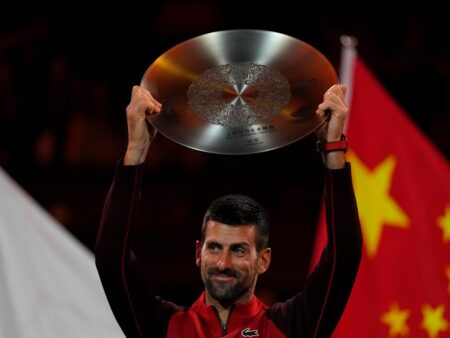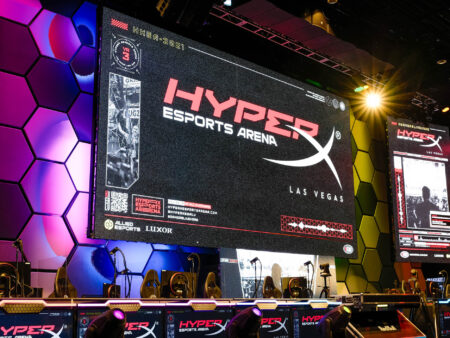Budapest`s majestic Hungarian National Gallery recently played host to the 11th Judit Polgar Global Chess Festival, an extraordinary event that transcended the traditional boundaries of chess. Drawing thousands, it offered a vibrant tapestry of strategic thinking, technological marvels, and a palpable sense of community.
Under the banner of “play, inspire, experience,” this annual celebration, orchestrated by the legendary Judit Polgar, continues its mission to redefine the role of chess in the 21st century. It`s no longer just about pieces on a board; it`s a dynamic platform for cultural exchange, intellectual challenge, and the unifying power of a game that speaks a truly universal language.
The RubikChess Revelation: Two Puzzles, One Team
Among the festival`s most captivating introductions was the debut of RubikChess. Envision this: fifty spirited young, mixed pairs — one girl, one boy — courageously intertwining the dizzying complexities of the Rubik`s Cube with the profound strategic depth of chess. Because, apparently, mastering one brain-bending puzzle wasn`t quite enough for these bright minds. The concept proved an instant sensation, with registrations filling up faster than a grandmaster can calculate a forced mate.
This remarkably novel competition, enthusiastically championed by the FIDE Commission for Women`s Chess, brilliantly underscored the values of teamwork, creativity, and gender equality. Its resounding success strongly hints at RubikChess becoming a permanent, much-anticipated fixture in future festivals.

When AI Meets Kings and Queens: Chess in the Digital Age
For purists who might believe chess belongs firmly and solely within the realm of human intellect, the festival offered a compelling glimpse into a future where silicon meets strategy. Younger audiences, in particular, were mesmerized by technological marvels such as the world’s first AI-powered chess robot, deftly capable of manipulating real pieces, and the truly magical GoChess board, where pieces glide across squares as if guided by an unseen, sentient hand. It`s enough to make one ponder if soon, our most formidable opponents will indeed be crafted from circuits and code, offering an entirely new dimension to the game.
A historic highlight that encapsulated this evolving landscape was the live human-robot chess match, pitting young Hungarian talent Gellért Karácsonyi against the formidable SenseRobot – a fascinating duel between human intuition and artificial precision.

A Global Gathering: Connecting Minds Across Continents
Beyond novel games and advanced technology, the festival stood as a powerful testament to the enduring strength of community. Judit Polgar herself engaged in a thrilling simultaneous exhibition, battling teams from around the globe in a community simul that captivated hundreds of thousands of online followers. From interactive digital learning platforms to groups led by former world chessboxing champions (yes, that’s a thing, and apparently quite strategic), the event unequivocally demonstrated that chess truly is a game for everyone, transcending boundaries and backgrounds.
Cultural expressions also found a prominent place, with Chilean artist Juga presenting Queen`s Trap, an evocative audiovisual project celebrating the profound influence and creativity of women in chess. Concurrently, “The Invisible Chess Game” — a fascinating visual installation featuring Judit Polgar and Olympic silver medallist grandmaster Peter Ács — showcased the artistic side of strategic combat, proving that sometimes, the most profound battles are waged purely in the mind, or perhaps simply for art`s sake.
Judit Polgar, the visionary founder and organizer, perfectly encapsulated the spirit of the event: “The world comes together to play chess, not just as a game but as an educational tool… that brings people together and spreads joy and the values that we represent for many, many years.”
Sharpening Skills and Challenging Masters
Amidst the flurry of innovation and artistic flair, the festival remained steadfastly true to its competitive roots. The “Play on the Square” chess tournament attracted a multitude of eager competitors, while “Let`s Chess!” workshops, expertly guided by International Master Ármin Juhász, offered invaluable opportunities to hone strategic thinking and deepen analytical skills. For those possessing a bolder spirit, the “Challenge the Master!” event provided a rare and exhilarating chance to test one`s mettle against renowned chess experts — an occasion to learn, to compete, or simply to witness brilliance up close.
Even the Hungarian National Gallery’s dedicated museum educators enthusiastically joined the fray, offering thematic guided tours that seamlessly blended the captivating worlds of art and chess, inviting visitors to ponder timeless masterpieces while subtly strategizing their next move.

Judit Polgar`s Vision: Chess as a Universal Language
Since its inception in 2015, the Global Chess Festival has consistently championed chess as a powerful bridge connecting diverse cultures, generations, and communities. This year`s iteration, met with “extraordinary interest,” only served to solidify this profound mission. It highlighted not only the game`s undeniable intellectual appeal but also its immense capacity to inspire, connect, and bring sheer joy to participants of all ages and backgrounds.
As the curtains drew to a close on another immensely successful festival, one truth emerged with crystal clarity: Judit Polgar’s grand vision for chess extends far beyond the confines of winning or losing. It`s about fostering a dynamic, inclusive, and ever-evolving experience that resonates powerfully beyond the 64 squares, continually proving that this ancient game remains a remarkably vibrant and relevant force in our modern world.










